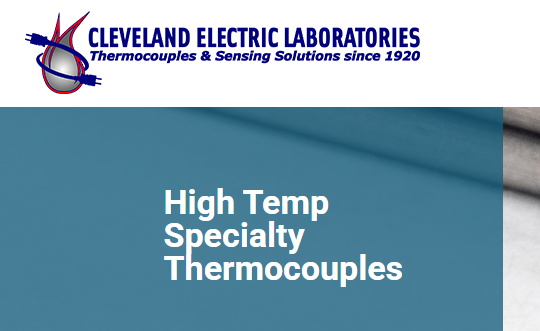Meta description: Discover how high temp thermocouples operate, their applications, and benefits in this comprehensive guide. Learn more about their crucial role!
High temp thermocouple plays a crucial role in industrial settings, providing accurate temperature readings in extreme conditions essential for many applications. This guide explores how high temp thermocouples work, their construction, applications, and tips for choosing the right one. Whether you are an engineer, technician, or simply curious about temperature measurement technology, this article offers valuable insights and practical advice.
Understanding High Temp Thermocouple: Basics and Types
What Is a Thermocouple?
A thermocouple is a temperature sensor made from two different metals joined at one end, forming a junction. When this junction changes temperature, it generates a voltage that can be measured to find the temperature. Thermocouples are popular because they are simple, durable, and can measure a wide temperature range. High temp thermocouples specifically are designed to function effectively in environments where temperatures exceed 1,000°C (1,832°F).
How Thermocouples Work
Thermocouples operate on the Seebeck effect, which indicates that a voltage results when two dissimilar metals are joined and exposed to a temperature difference. This voltage correlates with the temperature difference between the junction and a reference point, often kept at a known temperature.
Types of Thermocouples
Thermocouples are categorized based on their metal combinations, each suited for different temperature ranges and environments. The most common types include:
- Type K (Chromel-Alumel): Versatile and affordable, it measures temperatures from -200°C to 1,260°C (-328°F to 2,300°F).
- Type S (Platinum-Rhodium): Best for high temperatures, it accurately measures up to 1,480°C (2,700°F) and is often used in labs.
- Type R (Platinum-Rhodium): Similar to Type S but handles slightly higher temperatures, up to 1,600°C (2,912°F).
- Type T (Copper-Constantan): Ideal for low temperatures, measuring between -200°C to 350°C (-328°F to 662°F).
These types serve various industries, including aerospace, manufacturing, and research.
Thermocouples for High Temperature Applications: Construction and Materials Used
Components of High Temp Thermocouples
High temp thermocouples are built with materials that endure extreme temperatures. Key components include:
- Thermocouple Wires: Made from specific metal alloys chosen for their temperature range and environment.
- Insulation: High-temperature materials like ceramic or fiberglass protect the wires from environmental factors and electrical interference.
- Protective Sheath: Often made from stainless steel or Inconel, this sheath shields the thermocouple from oxidation and mechanical damage.
Material Selection for High Temp Applications
Choosing the right materials ensures the accuracy and longevity of thermocouples for thermocouples for high temperature applications. Common materials include:
- Nickel Alloys: Preferred for Type K thermocouples due to their resistance to oxidation and corrosion at high temperatures.
- Platinum-Rhodium Alloys: Used in Type S and R thermocouples for their stability and accuracy at elevated temperatures.
- Ceramic Insulation: Withstands extreme conditions without degrading, often used in high-temperature environments.
Construction Techniques
Building high temp thermocouples requires precise methods for reliability and performance. These techniques may include:
- Welding: The thermocouple wires’ junctions are welded to ensure a strong bond that can handle thermal cycling.
- Coiling: Some thermocouples are coiled to enhance their responsiveness to temperature changes.
- Calibration: Regular calibration is essential for accuracy, especially in critical applications.
In manufacturing, a steel production plant utilized Type S thermocouples to monitor furnace temperatures. By maintaining optimal temperatures, they improved product quality and reduced energy costs.
How Very High Temperature Thermocouples Operate: The Science Behind Temperature Measurement
The Seebeck Effect in Detail
The Seebeck effect is the core principle of thermocouple operation. When two different metals meet, the electrons in the metals react differently to temperature changes, creating a measurable voltage. The relationship between voltage and very high temperature thermocouples depends on the thermoelectric properties of the chosen materials.
Voltage Output and Temperature Relation
The voltage output of a thermocouple is typically small, measured in millivolts (mV). The link between voltage output and temperature is nonlinear, necessitating calibration tables or software for precise readings.
Reference Junction Compensation
To ensure accurate measurements, the reference junction (where the thermocouple wires connect to the measuring device) must maintain a constant temperature. Compensation techniques help achieve precise readings, even if the reference junction temperature varies.
Applications of High Temp Thermocouples in Industry
Aerospace and Aviation
In aerospace, high temp thermocouples monitor engine temperatures to ensure safety. They are used in:
- Jet Engines: Monitoring combustion chamber temperatures optimizes performance and prevents overheating.
- Airframe Testing: Ensuring structural integrity during high-temperature tests.
Manufacturing and Metal Processing
High temp thermocouples are vital in manufacturing, particularly in metal processing. They are used in:
- Furnaces: Measuring temperatures in kilns and furnaces ensures optimal operation and product quality.
- Heat Treating: Monitoring temperatures during heat treatment to achieve desired material properties.
Power Generation
In the energy sector, high temp thermocouples are essential for:
- Gas Turbines: Monitoring combustion temperatures for efficiency and safety.
- Nuclear Power Plants: Ensuring reactor temperatures stay within safe limits.
Research and Development
In research labs, high temp thermocouples are widely used for:
- Material Testing: Measuring thermal properties of materials under extreme conditions.
- Combustion Studies: Analyzing temperature distributions in combustion processes.
Choosing the Right High Temp Thermocouple for Your Needs
Assessing Temperature Range
When selecting a high temp thermocouple, first consider the temperature range. Different types suit various temperature thresholds. For example, Type K thermocouples are versatile, while Type S thermocouples are better for high-precision applications.
Environmental Conditions
Consider the environmental conditions where the thermocouple will be used. Factors like humidity, corrosive substances, and mechanical stress can influence material choice. For corrosive environments, a sheath made of Inconel may be essential.
Accuracy Requirements
Different applications have different accuracy requirements. While Type K thermocouples provide good accuracy, Type S or R thermocouples offer higher precision for critical applications.
Installation Considerations
Installation can greatly affect thermocouple performance. Key considerations include:
- Mounting: Use proper mounting techniques to avoid excess thermal mass and ensure accurate readings.
- Wiring: Employ appropriate wiring methods to prevent electrical interference and signal loss.
Cost vs. Performance
Finally, weigh the cost vs. performance of different thermocouples. While high-end options may offer better accuracy and durability, balance these factors with your budget and specific application needs.



































